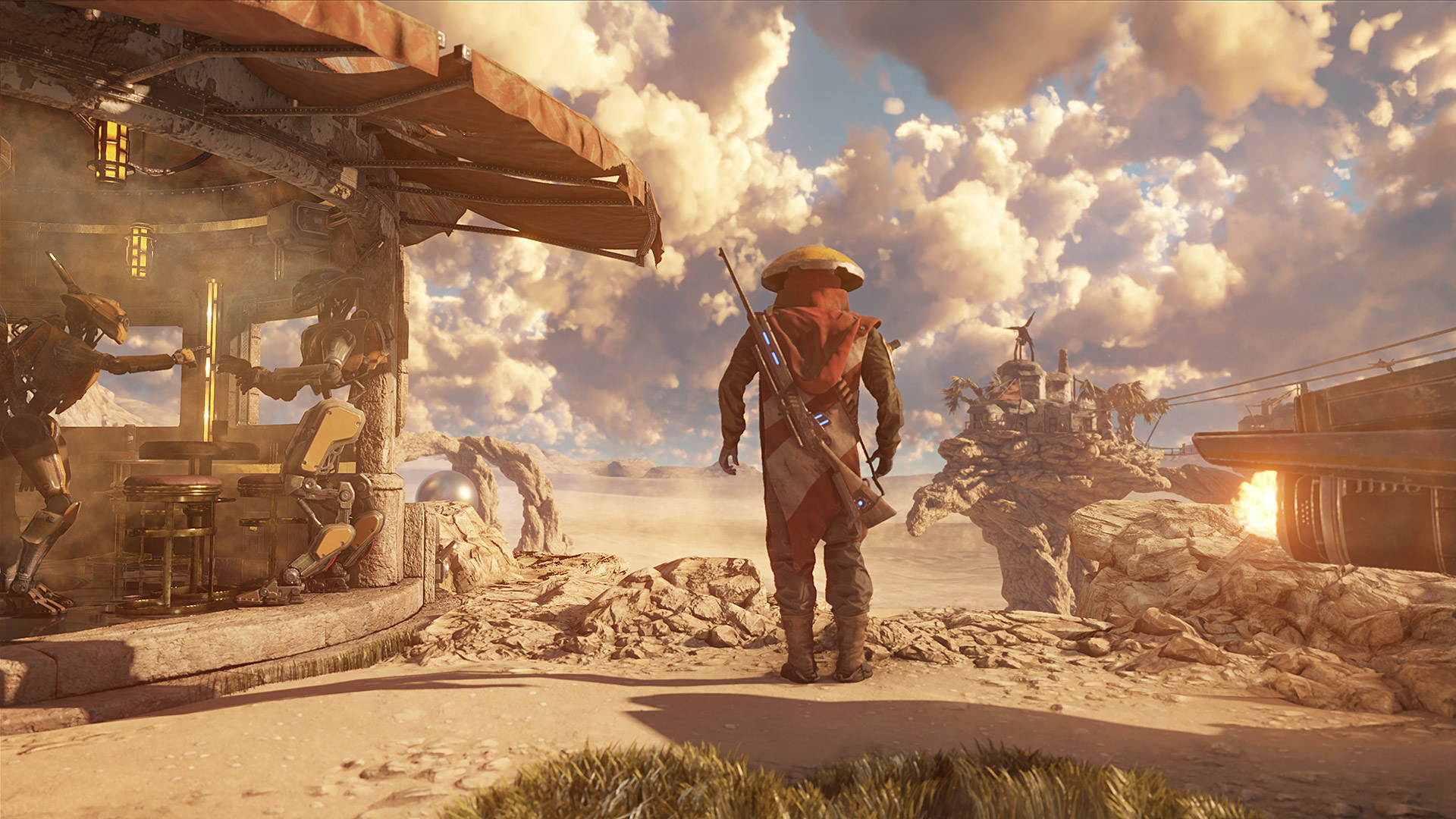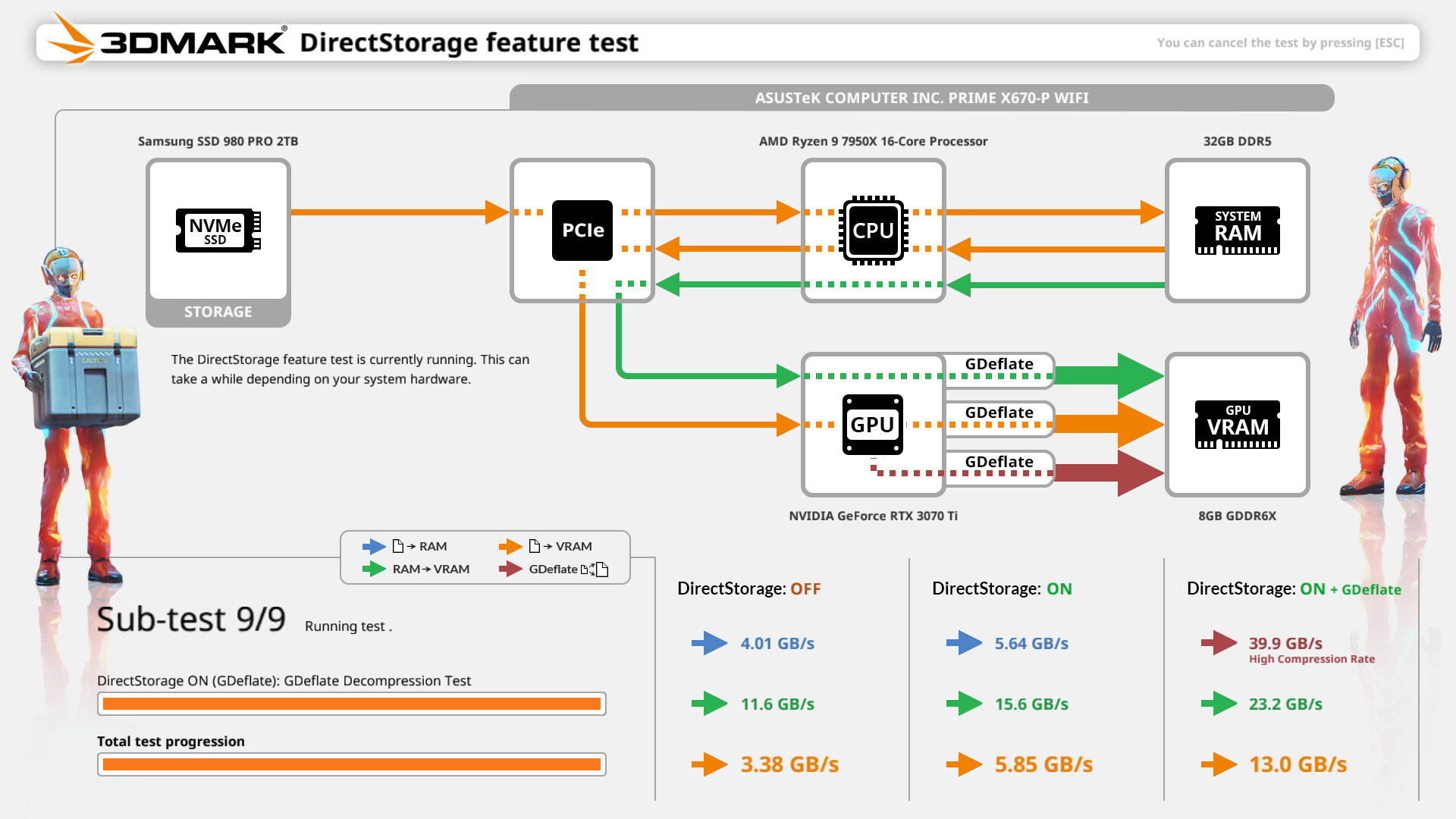3DMark gets new DirectStorage benchmark — GDeflate measures transfer rates from NVMe SSD to GPU VRAM

Well-known complete system benchmarking suite 3DMark is now adding a DirectStorage feature test to its suite of features. This DirectStorage feature test demonstrates the transfer rate of NVMe storage to GPU VRAM (storage-to-scene speed, basically) across three speed tiers: no DirectStorage, DirectStorage, and DirectStorage with GDeflate. Without GDeflate, DirectStorage only increases maximum throughput to about ~5.85 GB/s from 3.38 GB/s— but with GDeflate, that can go as high as 13 GB/s thanks to the magic of file compression.
Essentially, by ensuring your system can adequately perform the steps required to support DirectStorage and GDeflate, your system should be able to pass this 3DMark DirectStorage feature test. You only need an NVMe drive (PCIe 4.0 or newer recommended) and a compatible graphics card. While GDeflate is an open GPU compression standard introduced by Nvidia, nothing is stopping it from running on modern AMD and Intel graphics cards.
Aside from being highlighted in this 3DMark feature test, GDeflate is also the main feature behind "RTX IO," essentially just a souped-up version of DirectStorage that includes support for Vulkan API games alongside DirectX12 titles. Portal Prelude RTX was one of the earliest games demoed with the feature, but RTX IO is also present in other major DirectStorage releases, like Ratchet & Clank.

Interestingly, this feature test shows the surprisingly lenient entry level of DirectStorage and GDeflate support. While GDeflate reaches up to 13 GB/s in storage-to-VRAM operations, the actual DirectStorage cap is still about 5.85 GB/s without any file compression trickery. This is on the low end of PCIe 4.0 drives in read/write speeds, but it places most PCIe 3.0 drives slightly below true DirectStorage spec.
Besides the free update adding the 3DMark DirectStorage feature test, 3DMark has also been updated to include support for the French language and new soundtracks for the Speed Way, Wild Life, and Wild Life Extreme benchmarks. For users who got 3DMark through Steam or Epic Games and also paid for the 3DMark Storage Benchmark DLC, the update should be downloaded and applied automatically—at the latest whenever you next launch 3DMark.
Get Tom's Hardware's best news and in-depth reviews, straight to your inbox.

Christopher Harper has been a successful freelance tech writer specializing in PC hardware and gaming since 2015, and ghostwrote for various B2B clients in High School before that. Outside of work, Christopher is best known to friends and rivals as an active competitive player in various eSports (particularly fighting games and arena shooters) and a purveyor of music ranging from Jimi Hendrix to Killer Mike to the Sonic Adventure 2 soundtrack.
-
emike09 $2.99 for the storage benchmark that includes Direct Storage. Not a big price by any means, but UL Solutions segmenting their benchmark suite into microtransactions is a disgusting practice. Just throw everything into a single package. Steam reviews for their 'DLC' is very negative. Mostly related to WTF are we paying for this when it should be included already, and free / included Windows utilities already provide great insight. It's 100% okay to have an expensive professional version when you use it commercially or for profit, but for all of us tinkerers and enthusiasts, just give us everything for $30 and release new features for free if you paid for the main app already.Reply
Once upon a time, 3DMark was an absolute visual marvel to view. These days, each new release just leaves me wondering what happened to the early days when the benchmark not only pushed your system to the limits, but also looked incredible. Their benchmarks are just silly. And nobody in the review world actually uses it anymore when new hardware is released. They really need to step up their game to stay relevant. As I see it, it's a dying platform that nobody takes seriously. Give us a reason to care about 3DMark.